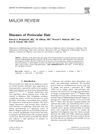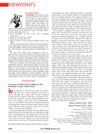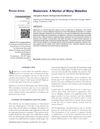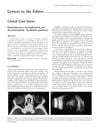Lash Ptosis in Congenital and Acquired Blepharoptosis
December 2007
in “
Archives of ophthalmology
”
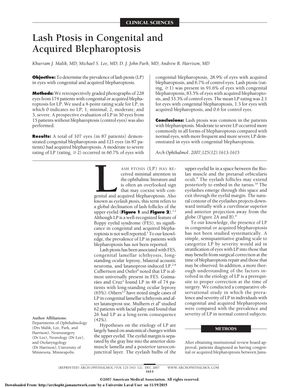
TLDR Lash ptosis is more common and severe in people with congenital eyelid droop than in those with acquired eyelid droop or without eyelid droop.
In a study from 2007, researchers investigated the prevalence of lash ptosis (LP) in patients with congenital and acquired blepharoptosis by retrospectively grading photographs of 228 eyes from 174 patients and prospectively evaluating 30 eyes from 15 control patients without blepharoptosis. They found that LP was present in 91.6% of eyes with congenital blepharoptosis and 83.5% of eyes with acquired blepharoptosis, compared to 33.3% of control eyes. Moderate to severe LP was observed in 60.7% of eyes with congenital blepharoptosis and 28.9% of eyes with acquired blepharoptosis, versus only 6.7% of control eyes. The mean LP rating was higher in eyes with congenital blepharoptosis (2.1) compared to those with acquired blepharoptosis (1.3) and control eyes (0.6). The study concluded that lash ptosis is common in patients with blepharoptosis, particularly more frequent and severe in cases of congenital blepharoptosis.
